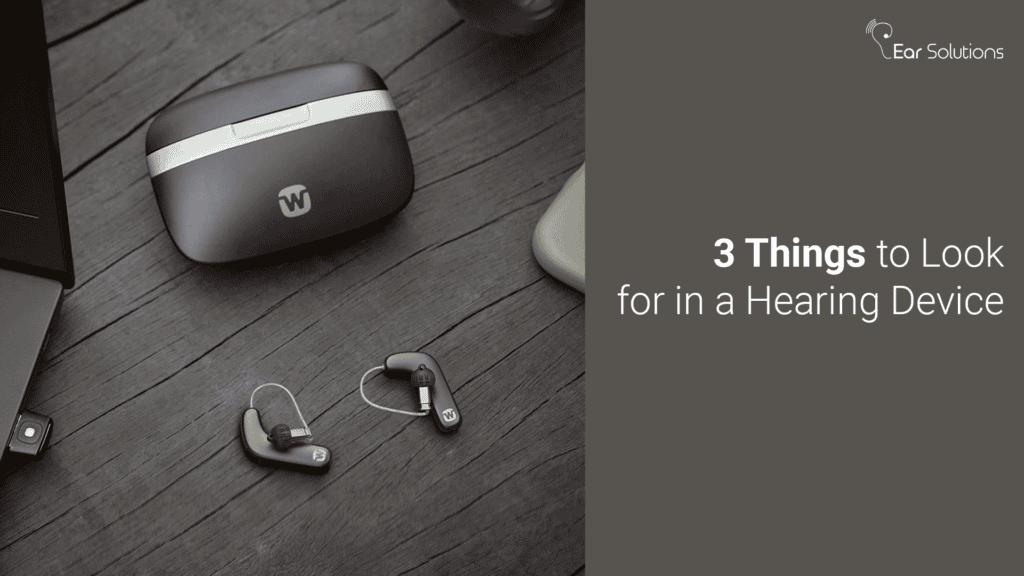Choosing the right hearing device is a critical step in improving your hearing and enhancing your overall quality of life. With a multitude of options available, it’s important to understand the features that will best meet your individual needs. In this blog, we will discuss three key features to look for in a hearing device: optimization, directionality, and connectivity.
1. Optimization
Definition: Optimization in hearing devices refers to the ability to customize and adjust the device settings to match the user’s specific hearing loss profile and preferences.
Why It’s Important
Personalized Hearing Experience: Each individual’s hearing loss is unique. Optimization ensures that the hearing aid is tailored to your specific hearing thresholds, amplifying the sounds you need most.
Adaptive Sound Processing: Modern hearing devices come with adaptive sound processing capabilities. This means the device can automatically adjust its settings based on the environment, ensuring you hear clearly whether you’re in a quiet room or a noisy restaurant.
Comfort and Clarity: Proper optimization reduces the need for manual adjustments and enhances overall listening comfort, providing clearer and more natural sound.
What to Look For
Automatic Adaptation: Look for devices that automatically adjust volume and frequency settings based on ambient noise levels.
Feedback Suppression: Ensure the device has effective feedback suppression to minimize whistling and other unwanted noises.
User-Friendly Adjustments: Consider hearing aids that offer easy-to-use controls for manual adjustments, either through physical buttons or companion apps.
2. Directionality
Definition: Directionality refers to the ability of a hearing device to focus on sounds coming from specific directions, enhancing the clarity of speech while reducing background noise.
Why It’s Important
Improved Speech Understanding: Directional microphones in hearing aids help isolate speech from background noise, making it easier to understand conversations, especially in noisy environments.
Natural Listening Experience: By mimicking the natural way our ears process sound, directional hearing aids provide a more immersive and realistic listening experience.
Enhanced Focus: Directionality helps you focus on what’s important, whether it’s a one-on-one conversation, a group discussion, or an important announcement.
What to Look For
Adaptive Directionality: Devices with adaptive directionality automatically switch between different directional modes based on the listening environment.
Beamforming Technology: This technology focuses on sounds from specific directions, which is particularly useful in noisy settings.
Multi-Microphone Systems: Hearing aids with multiple microphones can offer better spatial awareness and sound localization.
3. Connectivity
Definition: Connectivity refers to the ability of hearing devices to connect wirelessly to other devices such as smartphones, televisions, and computers, enhancing the user’s overall auditory experience.
Why It’s Important
Seamless Audio Streaming: Connectivity features allow you to stream audio directly from your phone, TV, or other devices, providing a clearer and more direct listening experience.
Convenient Control: Many hearing aid machines with connectivity options come with companion apps, giving you easy control over settings, volume, and program adjustments directly from your smartphone.
Enhanced Communication: Bluetooth-enabled hearing aids can improve communication through features like hands-free phone calls and direct audio input from various media sources.
What to Look For
Bluetooth Compatibility: Ensure the hearing aid device is compatible with Bluetooth for seamless connectivity with a wide range of devices.
Companion Apps: Look for hearing aids that offer robust companion apps for easy control and customization.
Multi-Device Pairing: Some ear machines can pair with multiple devices simultaneously, allowing you to switch between them effortlessly.
Conclusion
When selecting a hearing device, considering features like optimization, directionality, and connectivity can make a significant difference in your hearing experience. Optimization ensures the device is tailored to your specific needs, directionality enhances speech clarity in various environments, and connectivity offers seamless integration with modern technology. By focusing on these three key areas, you can choose a hearing aid that not only improves your hearing but also enhances your overall quality of life.
Remember to consult with an audiologist at the Ear Solutions hearing aid clinic to assess your specific hearing needs and get personalized recommendations. Investing in the right hearing device is a step towards better hearing health and a more connected, engaged life.





